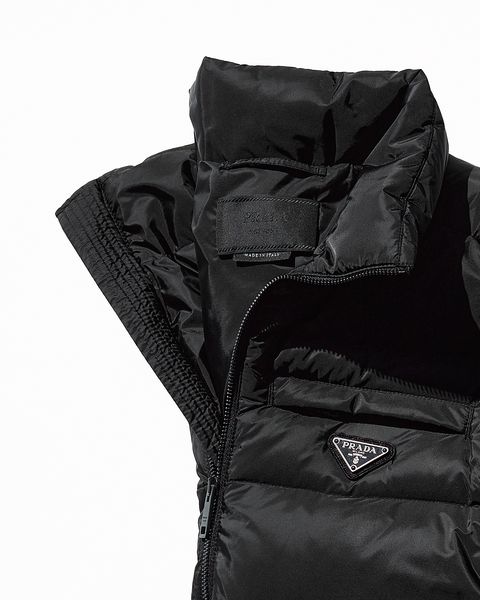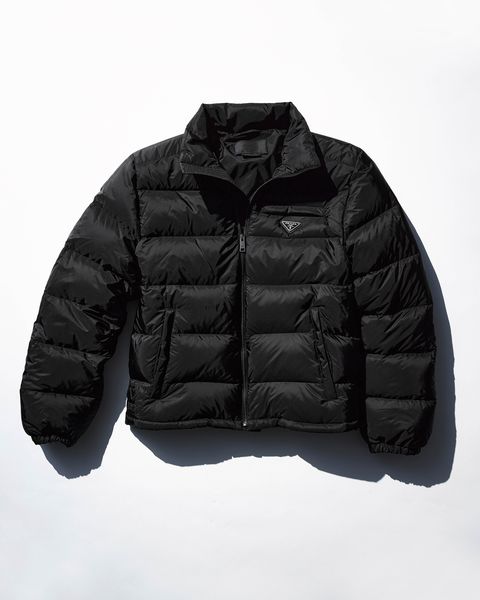$1,980,
Welcome to the first installment of The Investment, a new regular column highlighting those pieces—a little pricier, a lot nicer, and entirely worth the money—that we can’t help but advocate for you owning. These are the things our editors love and respect. The picks with a story to tell and a real reason to exist. Looking to put your dollars in the right place? Here’s how.
It’s hard to imagine that a little black nylon backpack could have caused quite the stir it did in 1984, when Miuccia Prada first posited it as the new statement in minimalist luxury. Up to that point, luxury—in accessories especially—pretty much meant leather or nothing. It certainly did not mean nylon. But Miuccia’s intellectual finger stuck up at traditional, fixated notions of elegance not only suggested nylon as a new definition of luxury, it also brought a sense of minimalist utility that had all-too-often been absent from fashion.
When, for fall 1995, she ushered in her first men’s collection, the mania for Prada’s little triangle logo jumped the gender divide. In stark contrast to the glitzy, ’70s-inspired fashion that was elsewhere on the runway, Prada was pared-down, devoid of pattern or embellishment—a futurist’s uniform. And if to emphasize that this was not business as usual, Prada hired men who were not models, but serious actors, to create her first campaigns. Over four seasons John Malkovich, Tim Roth, Willem Dafoe, and Joaquin Phoenix effectively endorsed Prada as the modern, cool, thinking man’s label. And that black nylon was everywhere: From accessories to suits, it became a kind of shorthand for ’90s minimalism.
Sustainability now—and forever.
Last year a growing interest in sustainability in fashion brought about the launch of a new kind of nylon at Prada. It looked as felt the same as the old stuff, but this time it was 100 percent recycled. To debut this new cloth, Miuccia Prada chose to recycle some of her thinking, too, recreating six of the best-selling men’s and women’s styles from the ’90s. ReNylon, as the cloth is called in-house, is the result of a lengthy collaboration between Prada and Italian yarn producer Aquafil. It is made from gathered plastic fishing nets, ocean flotsam, and textile fiber waste like carpets from landfills that are recycled in Italy and Slovenia. Aquafil first breaks down, and then re-polymerizes, the materials, spinning the monofilaments into new nylon yarn. Last year Aquafil estimated that for every 10,000 tons of Econyl produced from recycled plastics, 70,000 barrels of petroleum would be saved.
$1,980,
Way beyond bags.
This month Prada goes a big step further, expanding the ReNylon range to clothing and shoes for men and women, like this no-frills but eminently luxurious down jacket made in a silk-feel nylon called by the brand Piuma (Italian for feather) that makes for a super lightweight piece you can wear on its own or layer under an overcoat. It brings all the ’90s feel the rest of the ReNylon lineup offers in everything from anoraks and joggers to a zip-front shirt, and, for our money, represents one of the most perfectly spot-on selections from the collection.
Oh, you thought the sustainability was going to stop?
Not all efforts at sustainability are equal. While some brands seek only to create single-stage recycling, Prada’s ReNylon is engineered so that it is not only recycled—it is also endlessly recyclable, and without loss of quality or strength to the material. Prada vowed at the launch to use this property to ensure that 100 percent of the nylon used by the company would be made from ReNylon by the end of 2021, so creating a closed circle that does not create virgin petroleum-based ingredients. Which means by clicking you’re helping save the planet and getting a killer jacket. Plus, being endlessly recyclable, your puffer could one day be reincarnated as a backpack or a zippered tote. You might even buy it twice. How cool is that?
$1,980,
Photography and prop styling by Ben Alsop
Nick Sullivan is Creative Director at Equire, where he served as Fashion Director from 2004 until 2019.
This content is created and maintained by a third party, and imported onto this page to help users provide their email addresses. You may be able to find more information about this and similar content at piano.io







